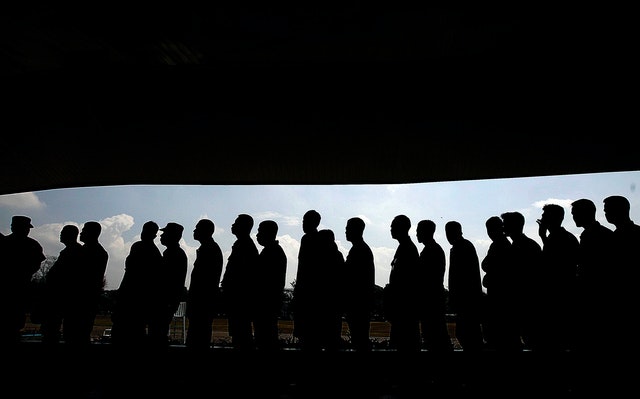
“Will we get paid?” This is the thought running through the minds of any subcontractor receiving a “Notice of Intention to File Bankruptcy” in relation to their contracting party. In typical small-to-medium corporate bankruptcies, parties such as subcontractors find themselves at the bottom of the priority totem pole of repayment. In comparison to larger creditors, such as financial institutions and federal/provincial governments, subcontractors tend to have nominal unsecured claims arising from accounts receivables. This places subcontractors in a position of low voting power and prevents meaningful participation in the bankruptcy process.
In response to this problem, the Ontario legislature created “trust” provisions in the Construction Lien Act/Construction Act (the “CLA”) to ensure that any monies received by Owners, Contractors, Subcontractors, and Vendors would be held for the benefit of the sub-contracting party.[1] At law, a “trust” is an equitable or beneficial right or title to land or other property, held for the beneficiary by another person, in whom resides the legal title or ownership[2] – in other words monies held on behalf of someone to whom those actual monies belong. Sections 7-9 of the CLA create a mechanism establishing that all amounts received by the [owner/contractor/vendor] in relation to the land constitute a trust fund for the benefit of the [contractor/subcontractor].
Trusts in a Bankruptcy
At the moment of a bankruptcy, all of the property owned by the bankrupt vests in their insolvency trustee for the purposes of distribution of same amongst various creditors.[3] Once property vests, the trustee makes a determination of priority as to who gets paid out in what sequence – secured creditors first, followed by super priorities, etc.[4] As unsecured creditors, subcontractors often find themselves last-in-line to receive their respective share of the bankrupt’s remaining property.
However, Section 67(1)(a) of the Bankruptcy and Insolvency Act (the “BIA”) establishes that the property of a bankrupt divisible among his creditors shall not comprise property held by the bankrupt in trust for any other person. This means that, monies held in trust – such as the CLA imposed trust – would not be considered as property of the bankrupt for distribution amongst creditors. As such, the interaction between the CLA trust regime and Section 67(1)(a) offers a solution for how to best protect subcontractors – namely, by divorcing the monies they may be owed from the general pool of the bankrupt’s property. Although CLA trusts have been around since 1942,[5] these trusts have been rarely recognized as qualifying for the Section 67(1)(a) exemption. Namely, issues such as the inability to identify funds otherwise commingled with the bankrupt’s general monies, as well as paramountcy issues between the CLA (a provincial statute) and the BIA (a federal statute), prevented subcontractors from accessing this otherwise legislatively-mandated protection.
Re-Interpretation by the Courts and Legislature
In the monumental 2019 decision of The Guarantee Company of North America v. Royal Bank of Canada, (“A-1 Paving”) the Ontario Court of Appeal finally gave teeth to the CLA trust provisions. At issue on appeal was whether the contractor’s trust created by Section 8 of the CLA would survive the bankruptcy of a contractor, A-1 Asphalt Maintenance Ltd. After undergoing a rigorous analysis as to whether the CLA possessed the necessary components to establish a traditional “trust”, the Ontario Court of Appeal determined that the CLA trust was
an integral part of the scheme…designed to protect the rights and interests of those engaged in the construction industry and to avoid the unjust enrichment of those higher up the construction pyramid.[6]
More recently, the Court of Appeal in Urbancorp Cumberland 2 GP Inc. (Re) (“Urbancorp”) expanded on the A-1 Paving case by holding that the vendor’s trust created by Section 9 of the CLA also qualifies as proper trust monies and falls outside of the insolvent party’s pool of property.[7] Additionally, the Urbancorp case confirms that the CLA trust regimes apply not only in the context of insolvencies under the BIA but also under restructuring regimes advanced in the Companies’ Creditors Arrangement Act (the “CCAA”). While A-1 Paving relates to Section 8 trusts and Urbancorp relates to Section 9 trusts, it is safe to say that these decisions are paving the way to all construction trust remedies providing adequate protection in both the BIA and CCAA contexts.
In further support of this proposition, the recently introduced Section 8.1 of the Construction Act created a positive obligation on contractors to keep an accurate accounting of the monies held in trust for subcontractors. While this requirement has not yet been interpreted to impact contracts and disputes governed by the Construction Lien Act, one can hope that this change in law will allow courts a more flexible approach in identifying trust funds.
How A-1 Paving and Urbancorp Impact Insolvencies in the Age of COVID-19
Needless to say, the COVID-19 global pandemic has affected many players in the construction industry. Parties are not receiving payment for their work, contracts are being frustrated, and insolvencies loom around every corner. For contractors, now is the time to ensure that your accounting is up-to-date to reflect any monies received from owners. For subcontractors, it is important to be vigilant if your contractors misses payments and appears to be heading into insolvency. For insolvency trustees, assist the bankrupt in identifying whether certain funds could be classified as trust monies to avoid future disputes.
The foregoing is for informational purposes only and should in no way be relied upon as legal advice. If you have any further questions, or would like to schedule an appointment for legal advice tailored to your circumstances and business, please contact me at dan@fridmar.com .
[1] Construction Act, formerly Construction Lien Act, R.S.O. 1990, c. C.30, as amended, ss. 7-9.
[2] Black’s Law Dictionary, online (May 2020), sub verbo “trust”.
[3] Bankruptcy and Insolvency Act, R.S.C. 1985, c. B-3, s. 71.
[4] Ibid, s. 136.
[5] Duncan W Glaholt & David Keeshan, The 2018 Annotated Ontario Construction Lien Act (Toronto, Ont: Thomson Reuters Canada Limited, 2017) at 84, 97, and 129.
[6] 2019 ONCA 9, at para. 32.
[7] 2020 ONCA 197, at para. 75.






